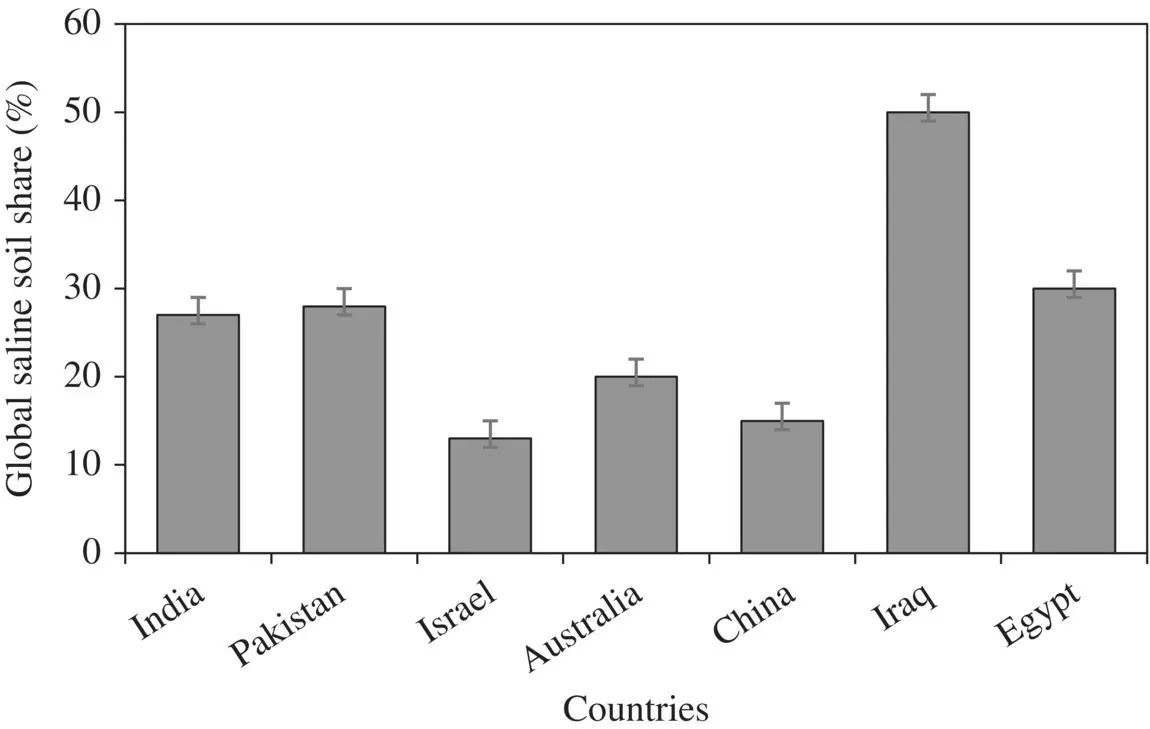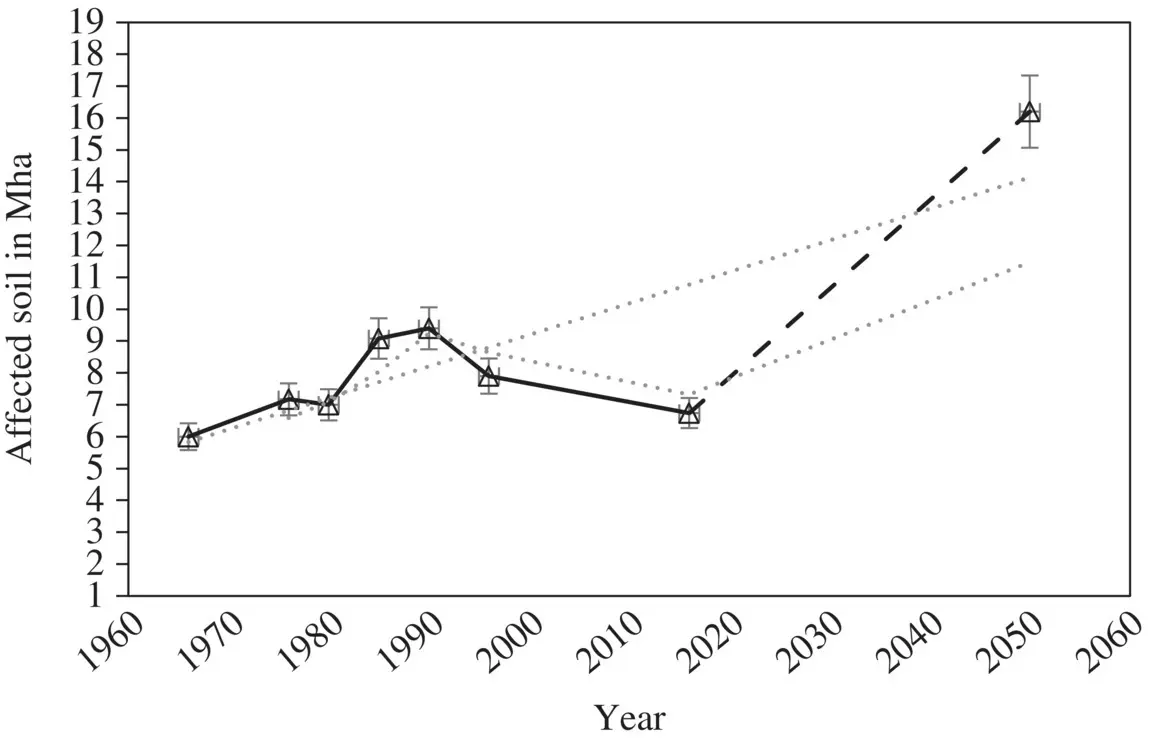Physiology of Salt Stress in Plants
Здесь есть возможность читать онлайн «Physiology of Salt Stress in Plants» — ознакомительный отрывок электронной книги совершенно бесплатно, а после прочтения отрывка купить полную версию. В некоторых случаях можно слушать аудио, скачать через торрент в формате fb2 и присутствует краткое содержание. Жанр: unrecognised, на английском языке. Описание произведения, (предисловие) а так же отзывы посетителей доступны на портале библиотеки ЛибКат.
- Название:Physiology of Salt Stress in Plants
- Автор:
- Жанр:
- Год:неизвестен
- ISBN:нет данных
- Рейтинг книги:4 / 5. Голосов: 1
-
Избранное:Добавить в избранное
- Отзывы:
-
Ваша оценка:
- 80
- 1
- 2
- 3
- 4
- 5
Physiology of Salt Stress in Plants: краткое содержание, описание и аннотация
Предлагаем к чтению аннотацию, описание, краткое содержание или предисловие (зависит от того, что написал сам автор книги «Physiology of Salt Stress in Plants»). Если вы не нашли необходимую информацию о книге — напишите в комментариях, мы постараемся отыскать её.
Discover how soil salinity affects plants and other organisms and the techniques used to remedy the issue Physiology of Salt Stress in Plants,
Physiology of Salt Stress in Plants
Physiology of Salt Stress in Plants
Physiology of Salt Stress in Plants — читать онлайн ознакомительный отрывок
Ниже представлен текст книги, разбитый по страницам. Система сохранения места последней прочитанной страницы, позволяет с удобством читать онлайн бесплатно книгу «Physiology of Salt Stress in Plants», без необходимости каждый раз заново искать на чём Вы остановились. Поставьте закладку, и сможете в любой момент перейти на страницу, на которой закончили чтение.
Интервал:
Закладка:
As per the statistics published by the Food and Agriculture Organization (FAO) in 2007, about 770 000 sq. km of the global land surface area is already salt affected, and approximately 430 000 sq. km is under secondary salinity threat. The study further estimated that around one‐third of the world's irrigated lands are either already affected by higher salinity or will be affected in the recent future.The global share distribution (in percentage) of saline soil across the countries is portrayed in Figure 1.1.
Multiple studies highlighted that abnormal abstraction of groundwater and waterlogging due to excessive irrigation often lead to desertification of fertile land. Therefore, urban local bodies (ULBs) and concerned government authorities should spread awareness among the farmers against salinization and over usage of water. Also, imposing water cess for misuse/overuse can be a productive measure to combat the typical tendency instantly, especially in the water‐scarce areas.
The overall salinity profile of India was first estimated in 1966 under the accountability of the Ministry of Agriculture. The raising concern developed due to uncontrolled usage of the chemical fertilizer provoked the study. Furthermore, in the period of 1980–2015, a total saline footprint of approximately 2 Mha has been reclaimed under the effort of the ICAR. The retracted area presently yields around 16 MT of fodder grains per annum. The trajectory of the salinity footprint of the nation and foreseen values are portrayed in Figure 1.2.

Figure 1.1 Worst‐affected nations vs. salinity share.
Source: Adopted from Rasool et al. (2013) and Mandal et al. (2018).

Figure 1.2 Salinity index and prediction for India since the Green Revolution.
Source: Adopted from Sharma and Singh 2015.
The figure portrays the sudden escalation in salinity footprint (i.e. up to 16.2 Mha) between 2020 and 2050 as per the prediction made by the ICAR (ICAR 2015). The prediction is highly likely with no scientific intervention. Moreover, the usage of inferior irrigation water and overconsumption, leading to negative pressure, may further accelerate the salinization process.
1.6 Effect of Salt Stress on Flora and Fauna of the Ecosystem
Salt stress induces a diverse range of metabolic and growth‐oriented detrimental changes in plants. Furthermore, protracted exposure can also inhibit crop yield. Primarily, saline exposure incurs OS, and it ultimately leads to ionic toxicities (Bano and Fatima 2009). Induced OS negatively impacts the root absorption capacity and accelerates the stomatal evaporation loss. Saline exposure elicits hyperosmotic pressure, which causes an adverse situation like the above. Initially, OS provokes several physicochemical amendments, which include membrane disruption and disfunctionality, disproportionate nutritive levels, retarded detoxification mechanism, and impaired photosynthesis rate (Munns and James 2003). Particularly, sodicity incites ionic stress by assimilating excess sodium and chloride ions into the plant tissue. Surplus accumulation of the above ions triggers ionic inequity leading to several growths related to detrimental changes. Elevated cell sodium ion concentration limits the required level of other essential plant nutrients such as potassium, thereby causing reduced yield and, ultimately, senescence (Ashraf 2004; Zhu 2007).
The inherent countermeasures also destructively impact plant biology. The generation of reactive oxygen species (ROS) can cause potential oxidation injury to the interstitial components like DNA structure, cell protein, and cell walls. The other sets of nondestructive defense mechanisms include elevation of photosynthetic rate, re‐exercising ion and water relation in the vesicular system, etc.
The saline balance of the terrestrial water sources is globally affected due to continual anthropogenic activities, for example, new England Marshes (Williams 2002). Perennial inland sweet water sources are worst affected due to the waste charging throughout the trajectory. Whereas, the salinity of global waters is also sacrificed due to the melting of glaciers. Territorial brackish streams such as arid estuaries and salt‐marshes are as well reasonably affected by the artificial agricultural discharge. But, this sudden change caters to a tremendous threat to the aquatic ecosystem. It incorporates abridged survivability, inhibited fertility, metabolic disorder, and retarded physiology (Velasco et al. 2019). Any varied salinity can mainly disrupt the osmotic balance between the surrounding hydrosphere and organismic, cellular fluid. The severity of impact varies between a minor metabolic malfunction and decease. To counteract the above, marine organisms develop an osmoregulation defense mechanism and eliminate hypo and hyperstress conditions. But, severe salinity or attenuation majorly conquers over the internal defense. Moreover, the consequences of successful defense are also majorly anonymous.
Additionally, investigations were also pursued to recognize the impact of ancillary factors such as temperature, but it seemed to be relatively insignificant. For instance, a study performed on zooplanktons reported metabolic issues upon exposure to altered salinity, but no apparent influence of temperature (Garreta‐Lara et al. 2018). Basic metabolic disfunctionalities elicited due to OS are addressed by spontaneous excretion. But, stress ascertained due to bioaccumulation of metals is far more complex, so the defense is required. Moreover, each metal is highly specific in terms of threat enforced.
An advantageous fact is that the combined stress imposed by the salinity and metal toxicity gets tackled by a common mechanism in case of catadromous and anadromous fishes during the migration, in and out from the oceanic environment. For instance, a study reported the secretion of carbonic anhydrase in sheepshead minnow, an estuarine variety while exposed to the combined stress evolved due to amended salinity and copper toxicity (Velasco et al. 2019). Furthermore, OS plays a protagonist role against metal stress for invertebrates residing in saline waters by incurring the ion transport system. Lack of free radicals and ions in the freshwaters facilitate metal uptake in the inhabitants. Therefore, the vulnerability of the sweet water species against the metal toxication is indeed more severe (Halse et al. 1998; Velasco et al. 2019).
Dry farming also raises intricate contact interaction amid washed off pesticides and water salinity. These halogenated chemicals probably act as a neurotoxin and inhibit the counteract mechanisms of the nervous system. Remarkably, hypersalinity pivotally helps anadromous varieties such as Brown trout to subside the impacts of exposure efficaciously. The effective counter mechanism correlated with an interpretation of malfunctioning of the neural system upon instantaneous exposure to elevated salinity. Furthermore, collateral stress induced due to the combined effect of salinity and dehydration results in protraction of the osmoregulatory responses in some plants and marine bugs, thereby diminishing the moisture loss. It portrays the discordant individual stressors that abolish each other, while severe impacts were observed upon elementary exposure (Williams 1998; Kultz 2015; Cañedo‐Argüelles et al. 2018).
1.7 Role in Sustainable Agriculture
Интервал:
Закладка:
Похожие книги на «Physiology of Salt Stress in Plants»
Представляем Вашему вниманию похожие книги на «Physiology of Salt Stress in Plants» списком для выбора. Мы отобрали схожую по названию и смыслу литературу в надежде предоставить читателям больше вариантов отыскать новые, интересные, ещё непрочитанные произведения.
Обсуждение, отзывы о книге «Physiology of Salt Stress in Plants» и просто собственные мнения читателей. Оставьте ваши комментарии, напишите, что Вы думаете о произведении, его смысле или главных героях. Укажите что конкретно понравилось, а что нет, и почему Вы так считаете.












